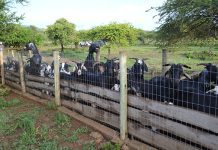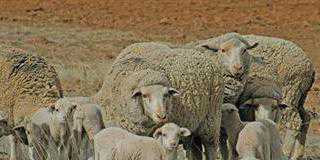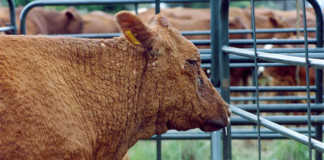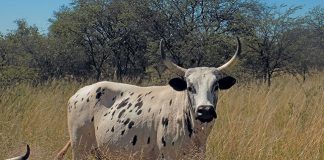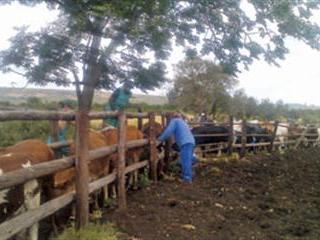
Rabies is caused by a virus that affects the brain. It is a zoonotic disease which means that infected animals can infect people. The virus ‘enters’ the saliva and is spread by the bite of an infected animal. Animal vaccination is essential for protection against this dangerous and fatal disease. The rabies virus is spread to animals and people mainly by dogs, black-backed jackal, yellow mongooses and bat-eared foxes.
Symptoms
Behaviour changes are the first signs of the disease. Domestic animals can become wild and aggressive, and may appear to be ‘mad’ or ‘rabid’, while wild animals may become passive, appearing tame. Paralysis eventually occurs, resulting in death.
People are infected when bitten by a rabid animal. The saliva of the rabid animal can also get into cuts, the mouth or the eyes and cause infection. For this reason, infected carcasses of cattle, sheep, goats, horses and donkeys may be a danger if they are cut open. It is possible to be infected when opening the skull and handling the brain of a rabid animal.
The first signs of rabies in people are headaches, anxiety, fever, vomiting and fear of water. This is followed by paralysis, coma and death. It takes about two to 10 weeks for symptoms of rabies to show after a bite. At this stage no treatment is effective and death is inevitable.
Prevention
- It is extremely important that dogs and cats are vaccinated against rabies.
- Young animals should be vaccinated twice in the first year and then every three years, or as often as required by your state veterinary authority.
- Notify your state vet immediately if you see an animal acting strangely and suspect rabies.
- Do not handle, or go near, a strange animal, a wild animal that seems tame and doesn’t run away from you, a sick animal that is not properly restrained, or an animal that appears aggressive.
Treatment
People do not die of rabies if they are treated as soon as possible after they have been bitten. Wash bite wounds as soon as possible with antiseptic soap and water and seek medical attention from the nearest clinic or doctor. The patient will start a course of injections, which prevents rabies developing. It is absolutely vital that the course is completed, because death can occur if all the injections are not given. Notify the state vet or the police. They will investigate and, if necessary, destroy the animal and make sure it’s tested for rabies.
| Dogs | Aggression, howling, attacking without warning, salivating (drooling), biting at imaginary flies, fixed stare, wandering aimlessly, lower jaw hanging, inability to swallow, eating soil and sticks, choking, vomiting, difficulty in walking, paralysis. |
| Cats | Become very aggressive and attack without warning. |
| Cows | Bellowing, drooling, choking, aggression, wind-sucking, inability to swallow, weakness, difficulty in walking, paralysis. |
| Horses | Aimless staggering, aggression, biting, inability to swallow, difficulty in walking, weakness, paralysis. |
| Donkeys | Biting, aggression. |
| Goats/sheep | Bleating, weakness in the hind-legs, aggression, excessive sexual activity. |
| Pigs | Aggression, biting savagely. |
| Wild animals | Appear tame, enter homes and gardens, night animals seen during the day, attack people and objects without warning, paralysis. |
More information
For more information, contact your animal health technician, state vet, doctor or nurse, or Animal Health for Developing Farmers, ARC-Onderstepoort Veterinary Institute, at 012 529 9158.
Source: Turton, Jenny: Rabies: A Killer Disease (Directorate Agricultural Information Services, department of agriculture, in co-operation with ARC-Onderstepoort Veterinary Institute.)






